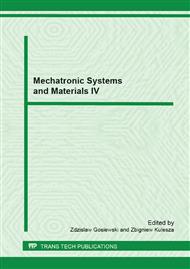p.238
p.243
p.248
p.254
p.260
p.266
p.275
p.283
p.289
UAV Avionics System Software Development Using Simulation Method
Abstract:
During last few years avionics system research platform was invented at the Military University of Technology. This modular simulator allows user to design and verify avionics system software using hardware-in-the-loop technique. Mathematical model of an airplane under tests is implemented on a high-performance computer which response to all control signals and environmental disturbances. Environment is simulated on a separate computer which can also visualize orientation and movement of the airplane. Plane structure and aerodynamic features as well as control data can be modified accordingly to user needs. The third PC is used as an interface unit between research platform and main computational unit of the avionics system. This device can send and receive information in real-time using various data protocols and interfaces depending on sensors and actuators that are planned to be used in real system. Those three computers work in a local area network and exchange data using Gigabit Ethernet standard. Possibility to simulate behavior of an UAV controlled by the developed avionics system implemented on an embedded computer working in hardware-in-the-loop mode on the platform, allows software developer to debug any part of the application in various environment conditions very close to reality. Research platform gives also the possibility to modify algorithm and adjust its parameters in real-time to verify suitability of the implemented avionics system software for the particular UAV. The avionics system software developed using this simulation method minimize expensive in-flight tests and assure failsafe performance after first successful flight
Info:
Periodical:
Pages:
260-265
Citation:
Online since:
March 2013
Authors:
Keywords:
Price:
Сopyright:
© 2013 Trans Tech Publications Ltd. All Rights Reserved
Share:
Citation:


